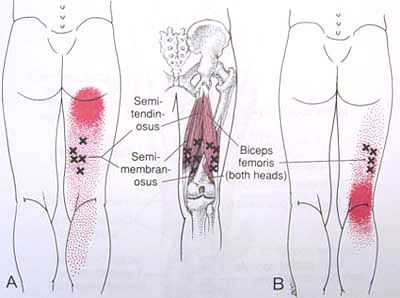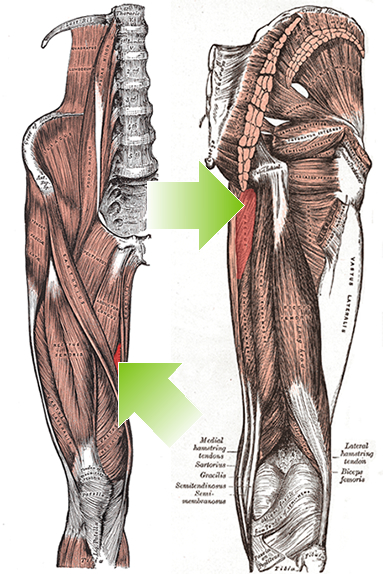Gait and Climbing: Part 1
Lucid Dreaming is the name of a rock in the Buttermilks of Bishop, California. This is no ordinary rock. It is a V15. Summiting this rock is basically only 3 moves off of 3 holds, from your fingertips. The remainder of the climb is sliced bread. If you can do the 3, you can get to the top. The problem is, only a handful of people in the world can do it. How hard can this be, after all you start sitting down.
Strength, stability, mobility, endurance, skill, experience, movement patterns … . it is all here, today, on The Gait Guys blog.
Author: Dr. Shawn Allen
There are things that other people can do in life that rattle your brain. These are tasks that these individuals make look fairly simple, but in actuality are nearly impossible to the average person. The honest fact is that many of us could do many of these things to a degree if we would dedicate a portion of our day to building the engine to perform these tasks, but the truth is that many of us would rather sit down and be entertained than get up and struggle.
Here on The Gait Guys blog, bipedal and quadrupedal gait has been discussed for over 5 years. Discussions have gone deep into the strange quadrupedal gait of Uner Tan Syndrome and have delved into the critical neurology behind CPG’s (Central Pattern Generators) which are neural networks that produce rhythmic patterned outputs. We have gone on and on about arm swing and how they are coordinated with the legs and opposite limb in a strategic fashion during walking running gaits.
Today I will look briefly at the interconnected arm and leg function in a high functioning human arguably one of the best new hot shots in climbing, Alex Megos. This year the German, as seen in this video link today, managed to summit Lucid Dreaming, a V15 in the Buttermilks of Bishop, California. Hell, you can say that this is just a big boulder, but there are not many V15s in the world like this one. Only a few of the very best in the world have even tried this rock, and you can count even fewer who have reached the summit. So, what does V15 mean to you? “virtually impossible” just about sums it up. Watch the video, this V15 starts from a “sit-start”, many folks wouldn’t even get their butts off the ground to complete the first move, that is how hard this is. Watch the video, if this does not cramp your brain, you perhaps you don’t have one.
Are there possible neurologic differences in climbers such as Megos as compared to other quadruped species? Primarily, there is suspect of an existing shift in the central pattern generators because of the extraordinary demand on pseudo-quadrupedal gait of climbing because of the demand on the upper limbs and their motorneuron pools to mobilize the organism up the mountain. We know these quadrupedal circuits exist. In 2005 Shapiro and Raichien wrote “the present work showed that human QL(quadrupedal locomotion) may spontaneously occur in humans with an unimpaired brain, probably using the ancestral locomotor networks for the diagonal sequence preserved for about the last 400 million years.”
As we all know, the interlimb coordination in climbing and crawling biomechanics shares similar features to other quadrupeds, both primate and non-primate, because of similarities in our central pattern generators (CPG’s). New research has however determined that the spaciotemportal patterns of spinal cord activity that helps to mediate and coordinate arm and leg function both centrally, and on a cord mediated level, significantly differ between the quadruped and bipedal gaits. In correlation to climbers such as Megos however, we need to keep in mind that the quadrupedal demands of a climber (vertical) vastly differ in some respects to those of a non-vertical quadrupedal gait such as in primates, in those with Uner Tan Syndrome and during our “bear crawl” challenges in our gyms. This should be obvious to the observer in the difference in quadrupedal “push-pull” that a climber uses and the center-of-mass (COM) differences. To be more specific, a climber must reduce fall risk by attempting to keep the COM within the 4 limbs while remaining close to the same surface plane as the hands and feet (mountain) while a primate, human or Uner Tan person will choose to “tent up” the pelvis and spine from the surface of contact which narrows the spreading of the 4 contact points. Naturally, this “tenting up” can be reduced, but the exercise becomes infinitely more difficult, to the point that most cannot quadrupedally ambulate more than a very short distance. I will discuss this concept in Part 2 of this series on climbing. If you study childhood development and crawling patterns, you need to be familiar with UTS (search our blog, save yourself the time), the flaws in the neurology behind the "Bird Dog” rehab pattern, and crawling mechanics … and of course, study climbers.
Some research has determined is that in quadrupeds the lower limbs displayed reduced orientation yet increased ranges of kinematic coordination in alternative patterns such as diagonal and lateral coordination. This was clearly different to the typical kinematics that are employed in upright bipedal locomotion. Furthermore, in skilled mountain climbers, these lateral and diagonal patterns are clearly more developed than in study controls largely due to repeated challenges and subsequent adaptive changes to these lateral and diagonal patterns. What this seems to suggest is that there is a different demand and tax on the CPG’s and cord mediated neuromechanics moving from bipedal to quadrupedal locomotion. There seemed to be both advantages and disadvantages to both locomotion styles. Moving towards a more upright bipedal style of locomotion shows an increase in the lower spine (sacral motor pool) activity because of the increased and different demands on the musculature however at the potential cost to losing some of the skills and advantages of the lateral and diagonal quadrupedal skills. Naturally, different CPG reorganization is necessary moving towards bipedalism because of these different weight bearing demands on the lower limbs but also due to the change from weight bearing upper limbs to more mobile upper limbs free to not only optimize the speed of bipedalism but also to enable the function of carrying objects during locomotion.
The take home seems to suggest that gait retraining is necessary as is the development of proper early crawling and progressive quadruped locomotor patterns. Both will tax different motor pools within the spine and thus different central pattern generators (CPG). A orchestration of both seems to possibly offer the highest rewards and thus not only should crawling be a part of rehab and training but so should forward, lateral and diagonal pattern quadrupedal movements, on varying inclines for optimal benefits. Certainly I need to do more work on this topic, the research is out there, but correlating the quad and bipedal is limited. I will keep you posted. Be sure to read my 3 part series on Uner Tan Syndrome, here on The Gait Guys blog. Some of today’s blog is rehash of my older writings, naturally I am setting the stage for “Part 2″ of Climbing.
- Dr. Shawn Allen
References:
Shapiro L. J., Raichien D. A. (2005). Lateral sequence walking in infant papio cynocephalus: implications for the evolution of diagonal sequence walking in primates. Am. J. Phys. Anthropol.126, 205–213 10.1002/ajpa.20049
Scand J Med Sci Sports. 2011 Oct;21(5):688-99. Idiosyncratic control of the center of mass in expert climbers. Zampagni ML , Brigadoi S, Schena F, Tosi P, Ivanenko YP
J Neurophysiol. 2012 Jan;107(1):114-25. Features of hand-foot crawling behavior in human adults. Maclellan MJ, Ivanenko YP, Cappellini G, Sylos Labini F, Lacquaniti F.























